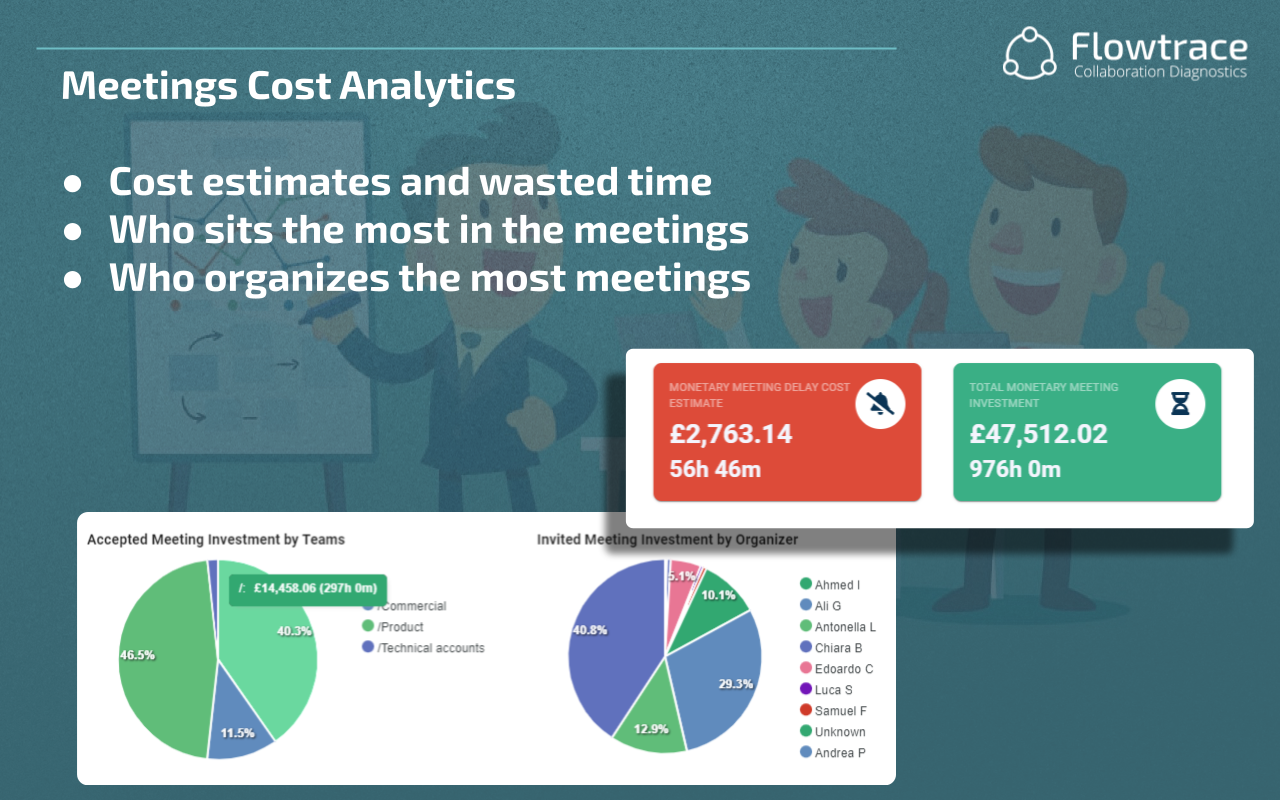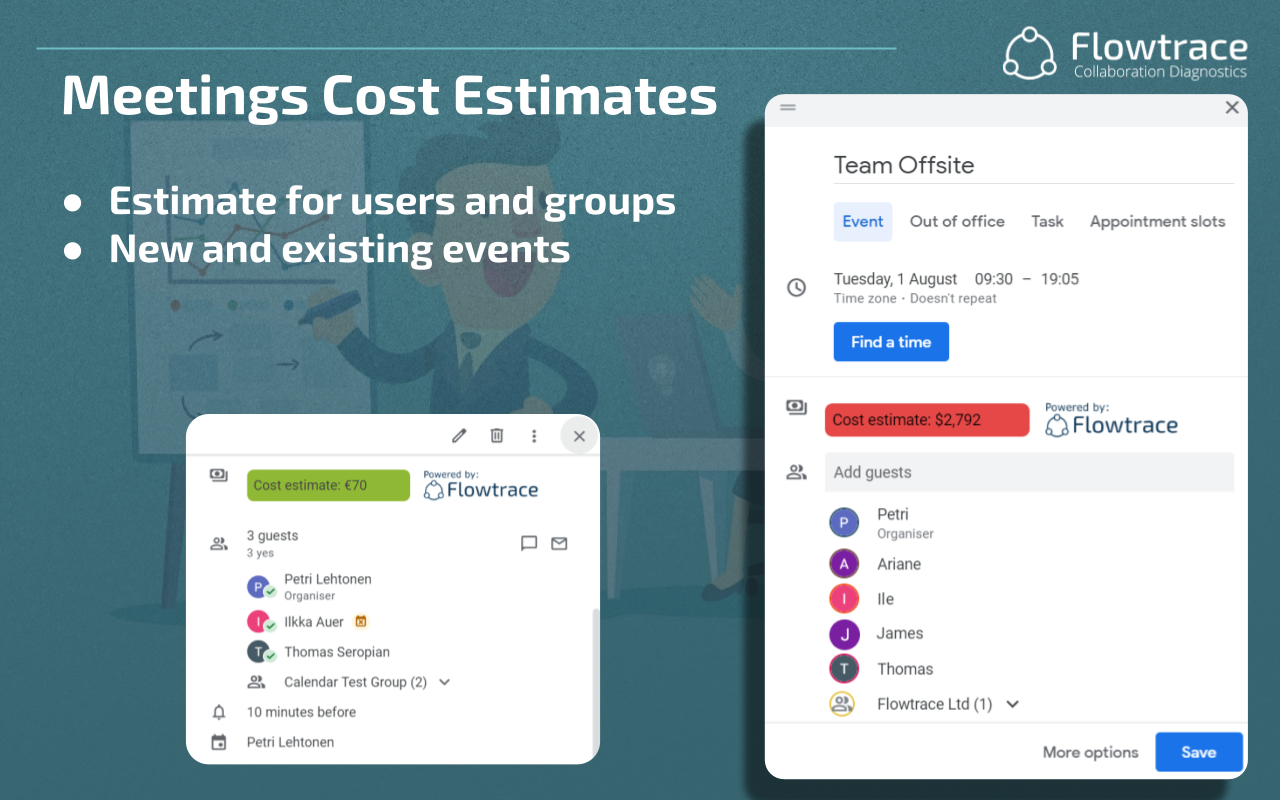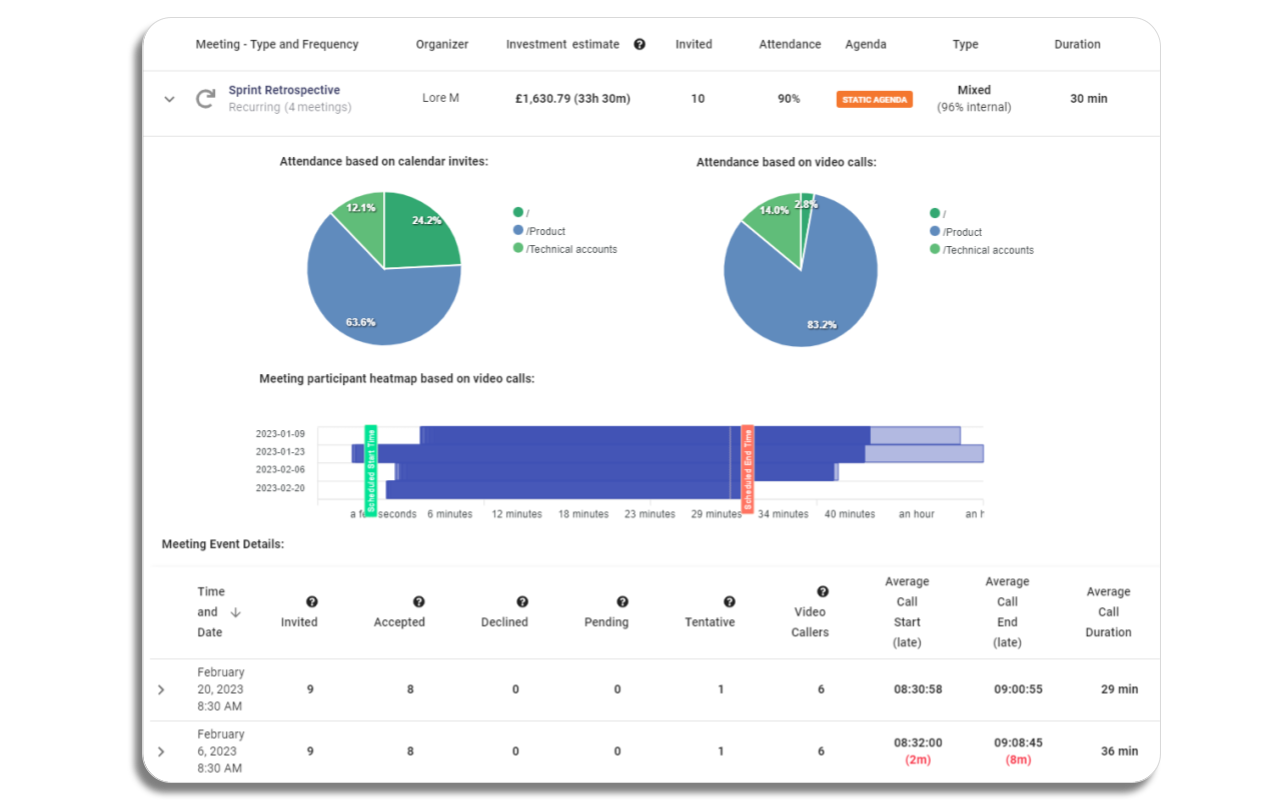How To Fix Unproductive Meetings
Learn how to fix unproductive meetings and enhance organizational productivity with strategic planning, effective meeting practices, and innovative...
Enhance productivity and decision-making with strategic meeting management. Learn key components, best practices, and solutions for effective leadership in meetings. Optimize your meetings with Flowtrace analytics tools.
Strategic meeting management is the systematic approach to planning, executing, and evaluating meetings to ensure they are efficient and aligned with organizational objectives. For leaders, effective meeting management is crucial as it directly impacts productivity, decision-making, and overall organizational performance.
By strategically managing meetings, leaders can ensure that every meeting has a clear purpose, and the right participants, and yields actionable outcomes, thus aligning meeting practices with the broader goals of the organization. This alignment helps in optimizing resources, fostering better collaboration, and driving strategic initiatives forward.

Strategic meeting management significantly impacts productivity and decision-making within organizations. According to a McKinsey & Company study, well-managed meetings can drastically improve both the quality and speed of decision-making. The study found that only 37% of respondents believe their organizations make high-quality decisions quickly, highlighting a substantial opportunity for improvement through better meeting practices.
Effective strategic meeting management can also lead to considerable cost savings and efficiency gains.

For example, the Harvard Business Review reports that poorly managed meetings can waste up to 71% of employees' time, which could otherwise be used for productive work. By implementing structured meeting strategies, organizations can reduce these inefficiencies, ensuring that meetings are purposeful and directly contribute to organizational goals.
Additionally, McKinsey emphasizes that organizations excelling in decision-making are twice as likely to see substantial returns from their decisions. This correlation suggests that improving meeting management can lead to better financial performance and more successful project outcomes.
By focusing on strategic meeting management, leaders can foster a culture of efficiency and purpose, ultimately driving better results and maximizing the use of time and resources within their teams.
Strategic meeting management involves several critical components to ensure that meetings are productive, efficient, and aligned with organizational goals. Here are the key elements to consider:
Effective meeting management begins with thorough planning and scheduling. Defining the purpose of the meeting and setting a clear agenda are essential steps. According to a study, providing an agenda in advance increases participant involvement and meeting effectiveness by giving attendees time to prepare their arguments and strategies. This pre-planning ensures that meetings are focused and that time is used efficiently.
Ensuring the right people are in the room is crucial for meeting success. Meetings should involve participants who have the necessary knowledge and authority to contribute to the discussion and make decisions. Selecting attendees carefully helps avoid unnecessary delays and ensures that the meeting's objectives can be achieved efficiently.
Utilizing modern tools for virtual meetings and collaboration can significantly enhance meeting effectiveness. Technology allows for seamless communication and collaboration, especially for teams spread across different locations. Tools like video conferencing software, collaborative document platforms, and scheduling aids help streamline the meeting process and make it easier to involve remote participants.
By focusing on these components, organizations can ensure their meetings are productive, well-organized, and aligned with their strategic goals. Effective meeting management not only improves decision-making and productivity but also leads to significant cost savings and efficiency gains. For instance, McKinsey & Company highlights that companies with effective meeting practices are twice as likely to report substantial financial returns from their decisions.
Implementing best practices in meeting management ensures that meetings are productive and yield actionable outcomes. Here are some key techniques:
Keeping Meetings on Track and On Time:
Ensuring Actionable Outcomes and Follow-Ups:
To evaluate the effectiveness of meeting strategies, it is essential to track specific metrics and gather feedback. Here are some methods:
Metrics and KPIs to Track Effectiveness:

Methods for Collecting and Analyzing Feedback:

By implementing these best practices and regularly measuring success, organizations can significantly enhance the effectiveness and efficiency of their meetings, leading to better decision-making and improved overall performance.
Strategic meeting management can face several common obstacles, but there are effective solutions to overcome these challenges:
Common Obstacles in Strategic Meeting Management:
Solutions and Strategies to Overcome These Challenges:
Leadership plays a crucial role in setting the tone and culture for effective meetings. Here’s how leaders can influence meeting management:
Setting the Tone and Culture:
The Importance of Leading by Example:
By addressing challenges with strategic solutions and leading by example, leaders can significantly enhance the effectiveness and productivity of meetings within their organizations.
Flowtrace provides a comprehensive suite of analytics tools to help optimize meeting practices and enhance overall productivity within organizations. Here are some key features:

Flowtrace allows organizations to monitor the real-time costs associated with meetings. This includes tracking the financial impact of meeting durations and identifying cost savings by optimizing meeting lengths and frequency.
Flowtrace offers detailed productivity metrics that help leaders measure the impact of meeting overload. These metrics provide insights into how meeting practices correlate with team performance and productivity levels, enabling data-driven decisions to improve efficiency.
The platform includes automated feedback workflows that collect participant feedback after meetings. This feedback is crucial for continuously improving meeting quality and ensuring that they remain productive and aligned with organizational goals.
Flowtrace analyzes the frequency and timing of meetings to prevent overload and optimize scheduling. This helps in identifying the best times for meetings to ensure maximum participation and engagement.

Flowtrace provides tools for conducting real-time audits of meetings. This feature helps leaders assess meeting effectiveness on the spot and make immediate adjustments to improve outcomes.
Leveraging advanced AI, Flowtrace identifies factors hindering team collaboration and provides practical, data-driven recommendations for improvement. These AI insights help in refining meeting practices and enhancing overall team performance.
Strategic meeting management offers substantial benefits, including improved productivity, enhanced decision-making, and significant cost savings. By implementing best practices such as clear agenda setting, effective time management, and targeted participant selection, organizations can transform their meeting culture. Leaders play a crucial role in this transformation by modeling effective meeting behaviors and fostering a culture of continuous improvement. Start using Flowtrace’s analytics tools today and focus on achieving more efficient and productive meetings.
Learn how to fix unproductive meetings and enhance organizational productivity with strategic planning, effective meeting practices, and innovative...
Improve meetings and learn how to set clear agendas, manage time effectively, and engage participants for better collaboration and productivity.
Transform your organization with data-driven meeting cultures. Learn how to optimize meetings, increase productivity, and drive better business...